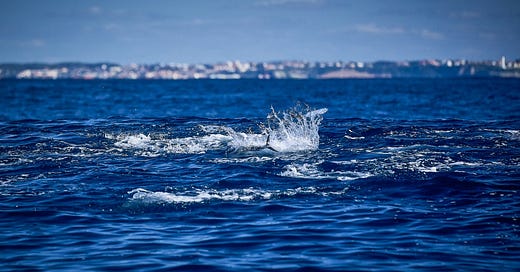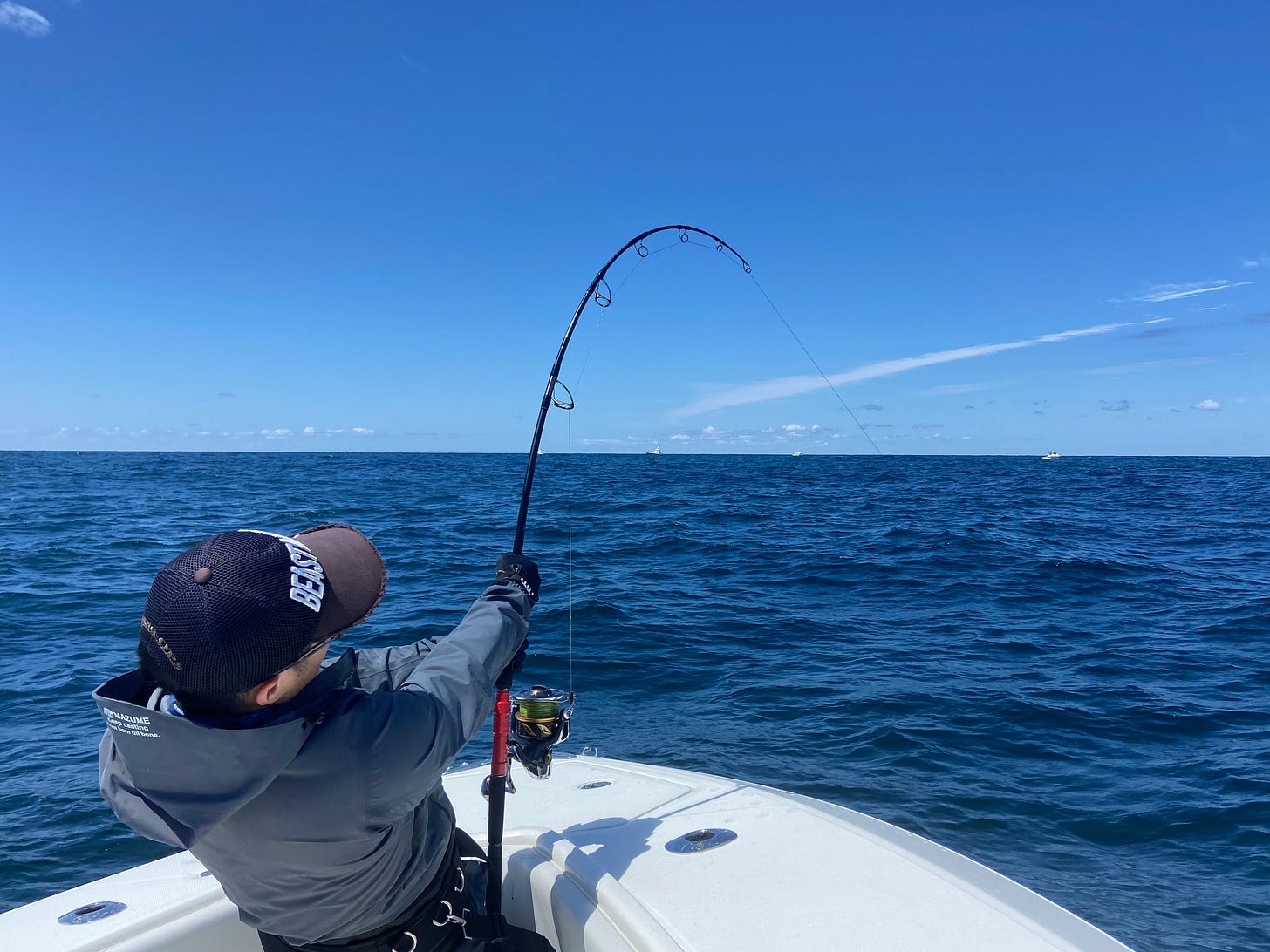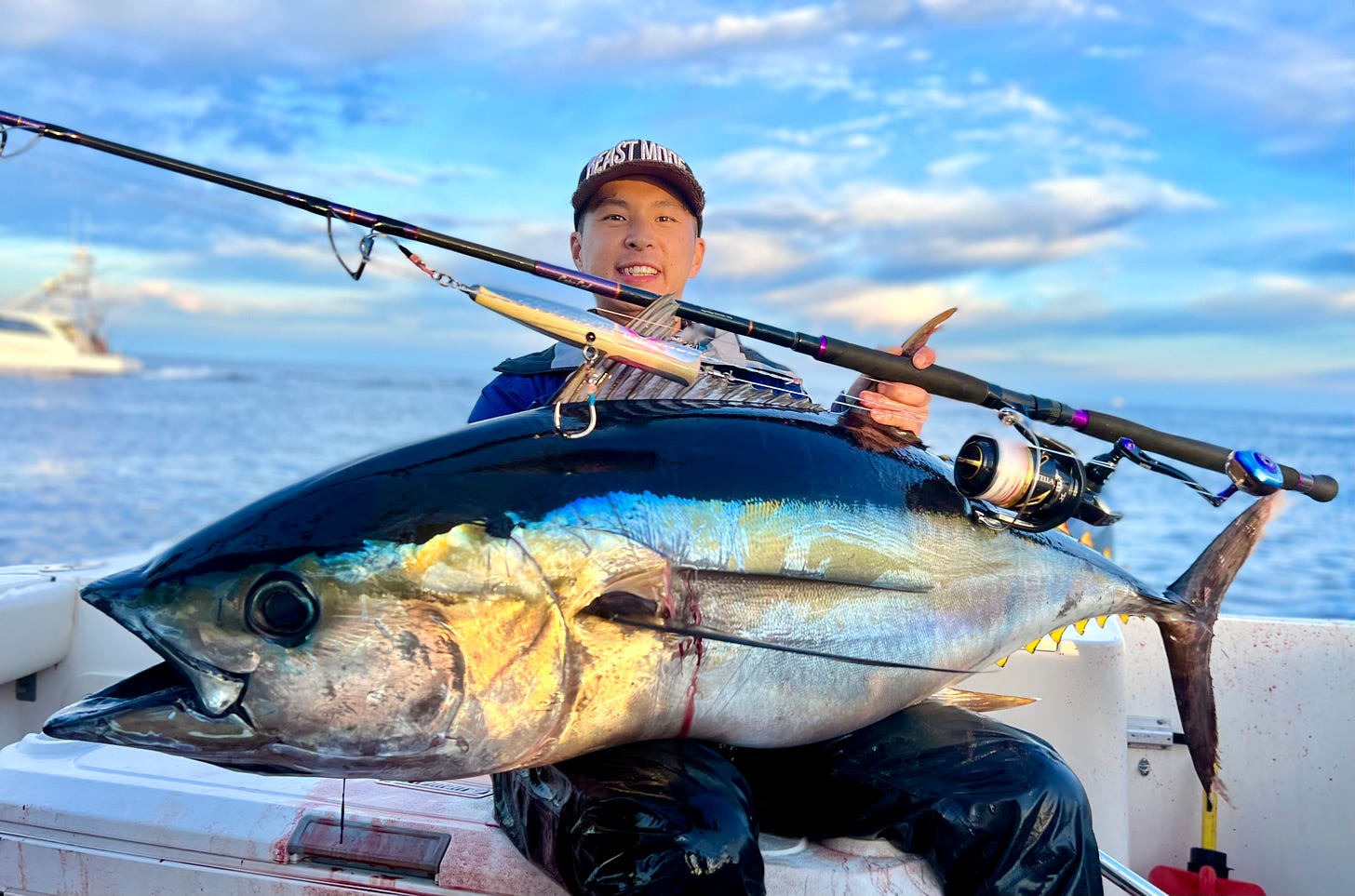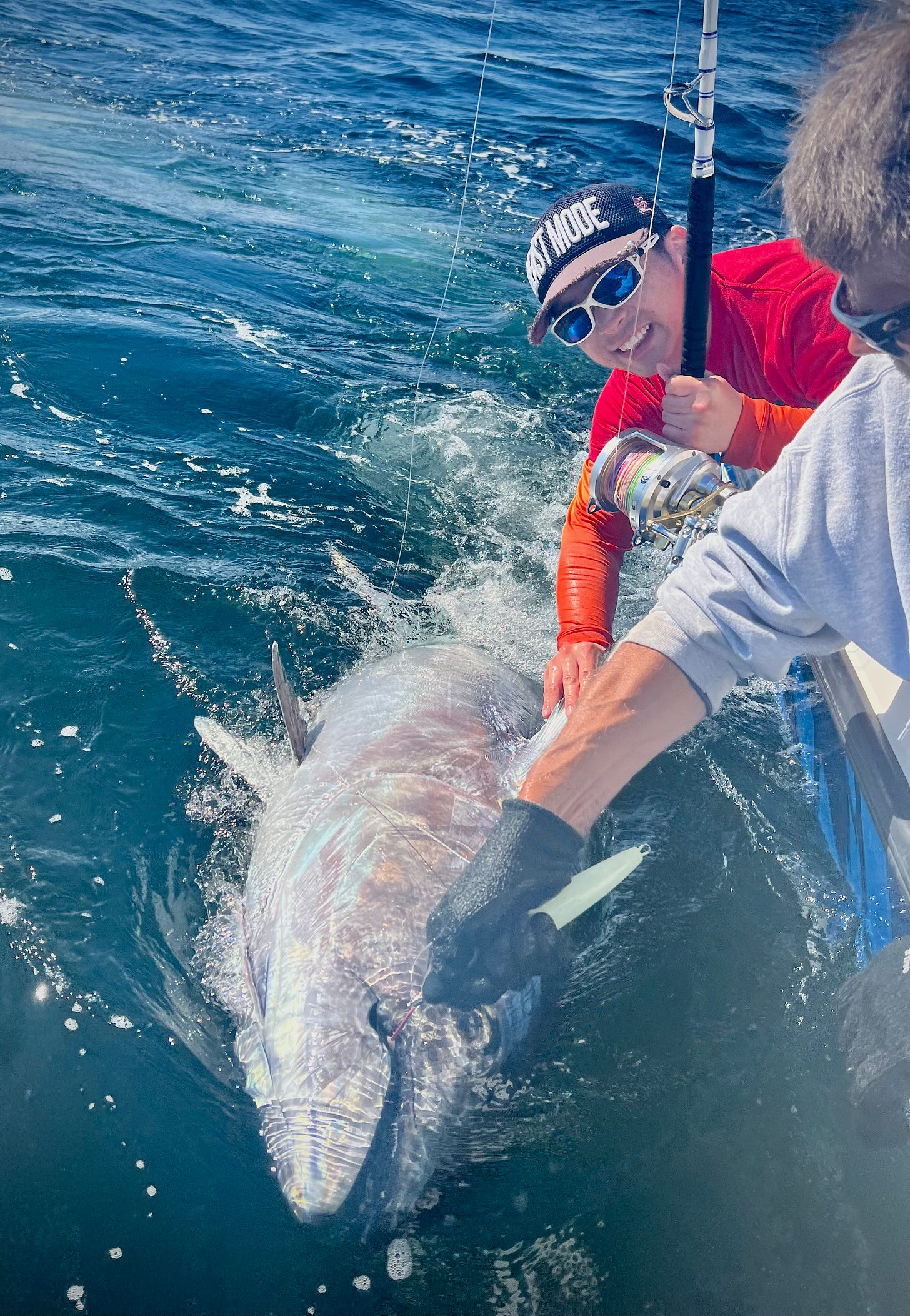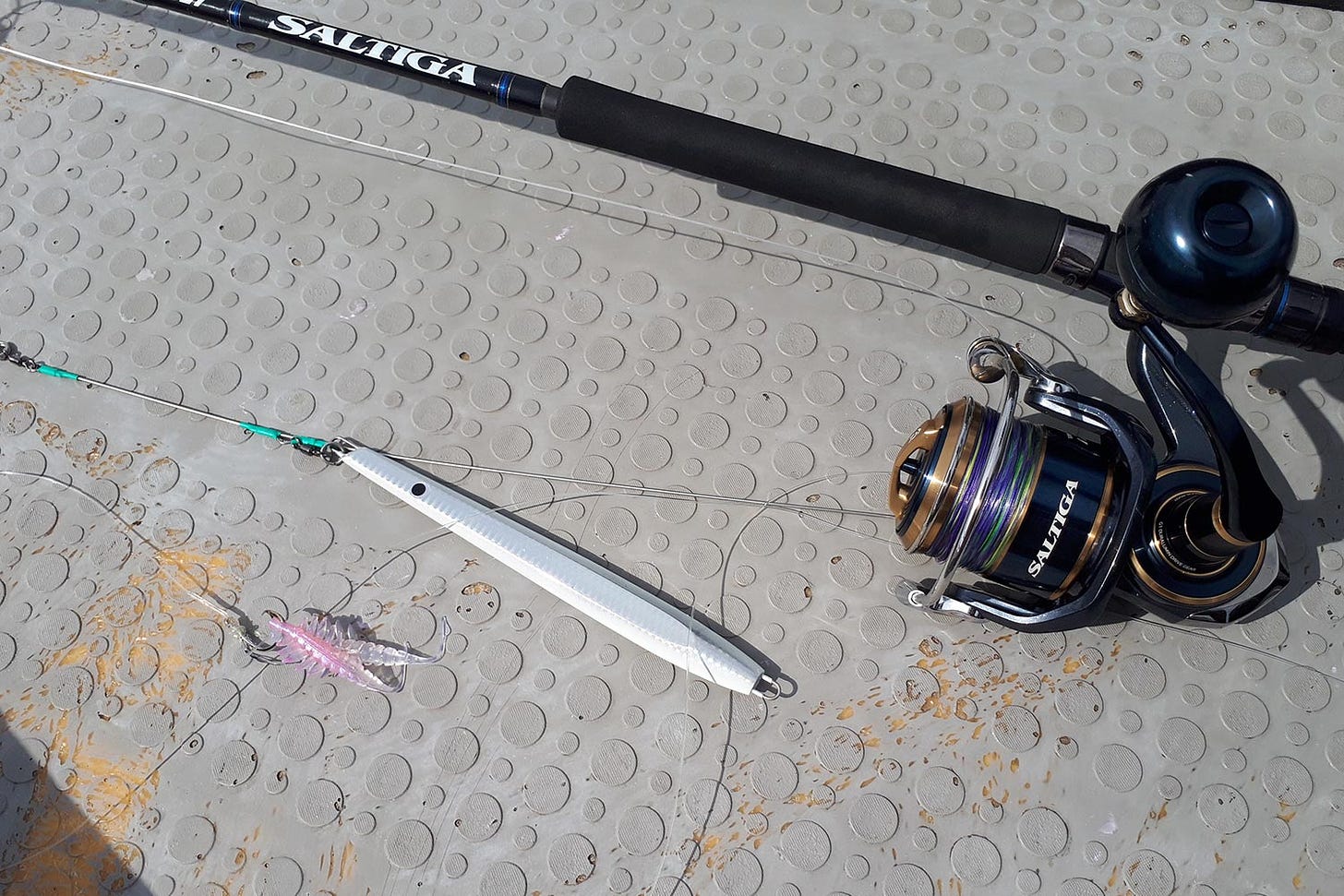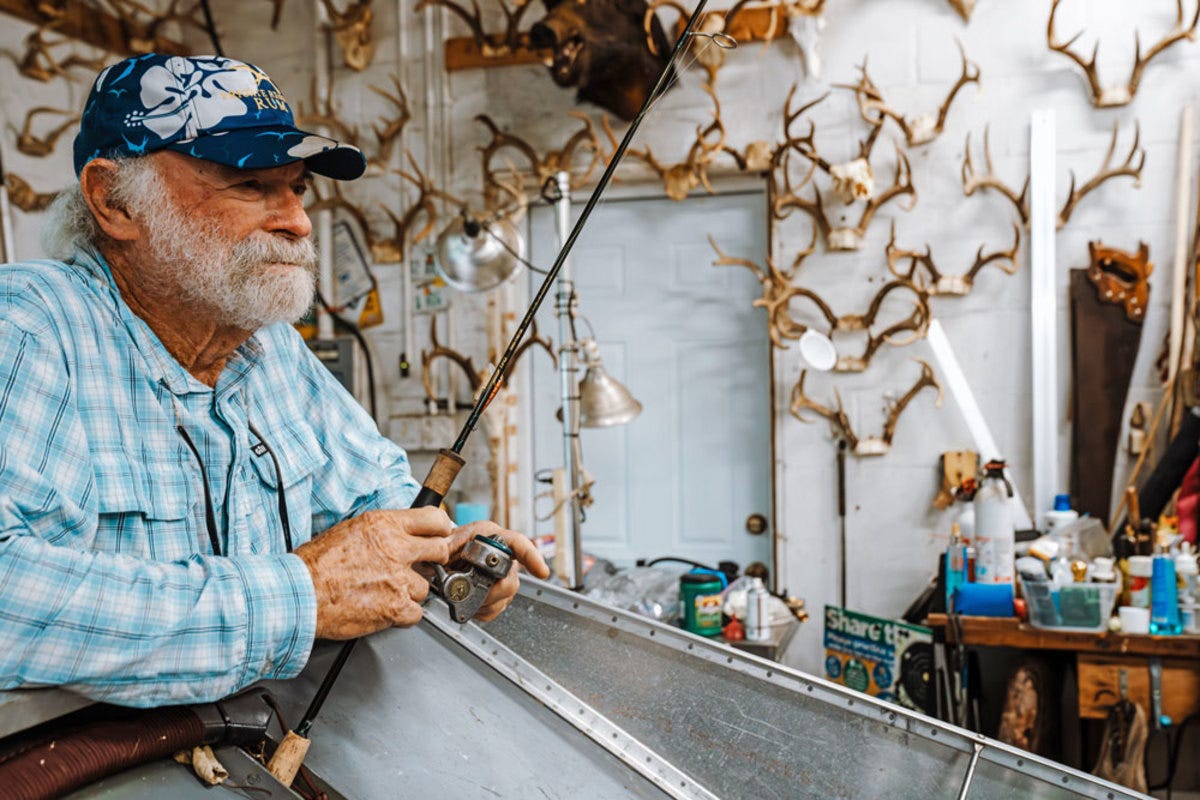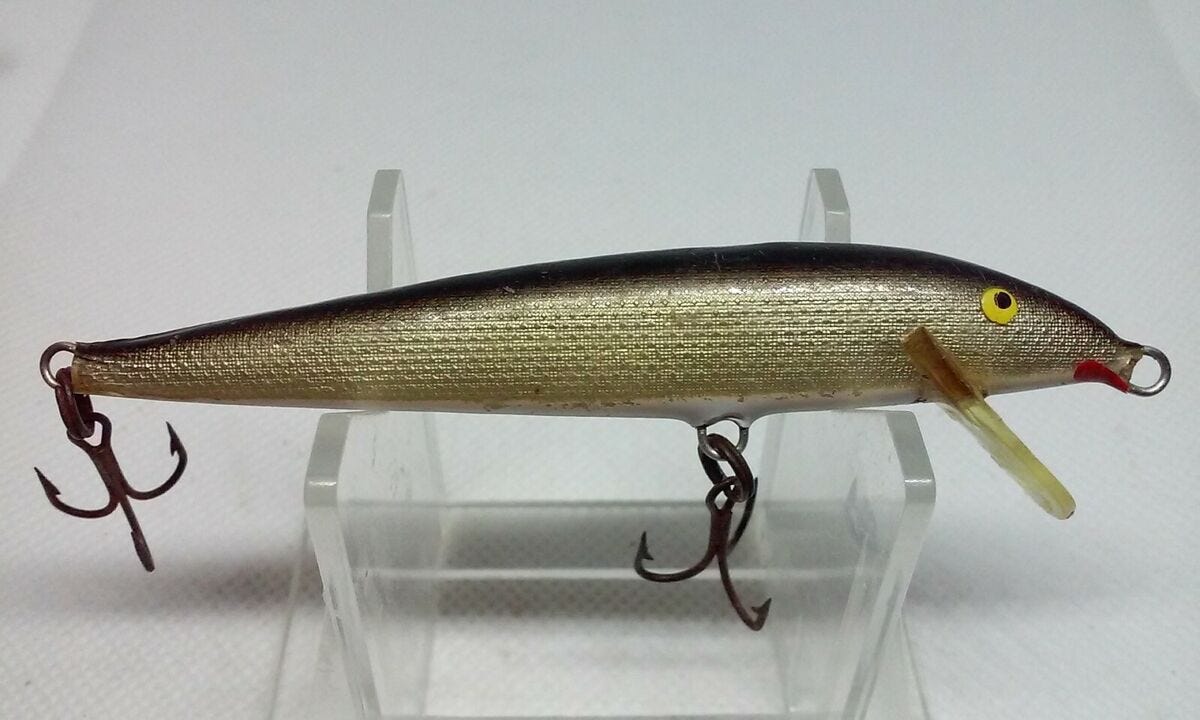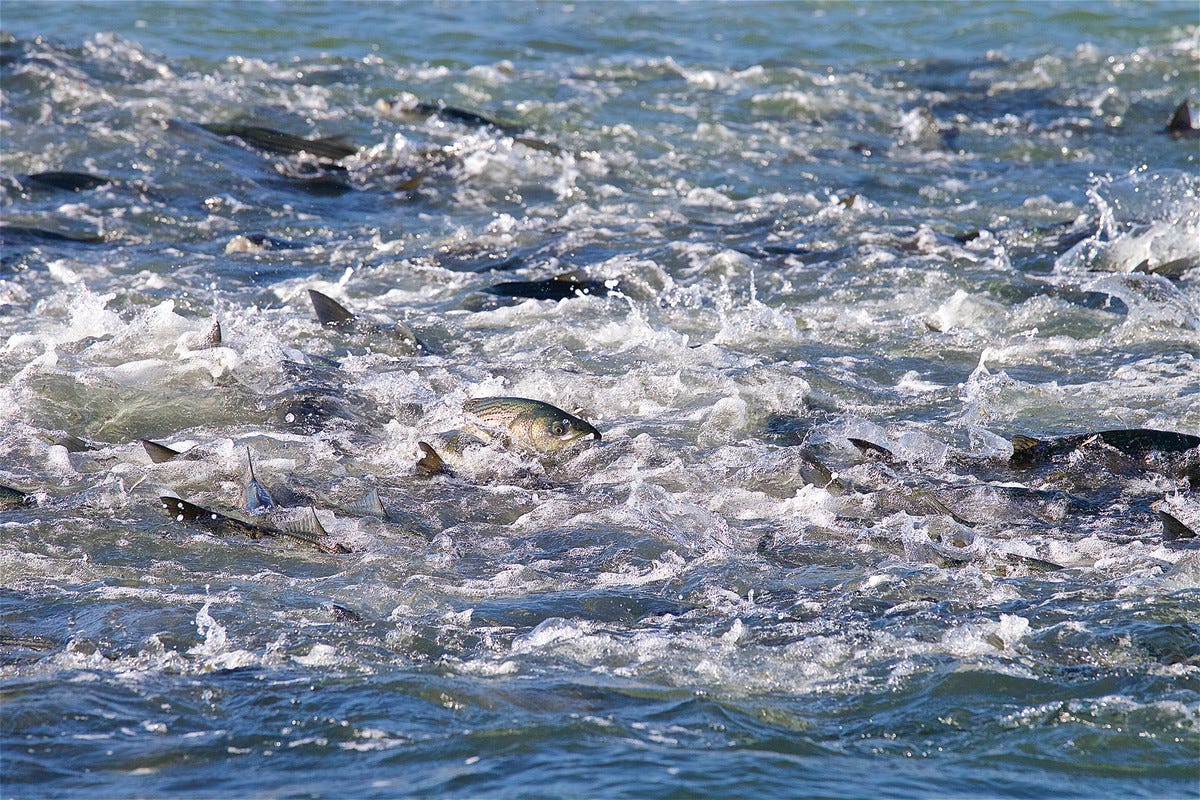The maritime rule of salvage has its origin in Roman law, which dictates that one who preserves or improves upon the misplaced property of another is owed compensation, even if the service was not requested. Let’s get out the inter-webs dragger and get to work…
Pod #1 | Saltwater Euphoria: NJ Tuna Fishing Then & Now —> Stephen Rhodes joins the pod to discuss multi-generational Northeast fishing knowledge: canyons know-how, tuna tips, and how to get kids into fishing.
Pod #2 | Cut & Retie: We’re Declaring a Mook-a-demic —> The Garbage Man explains the benefits of pilates and why you’re not special because you can catch blitzing 30lbers.
Footage | Big Plugs for BIG Stripers [On The Water] —> In an angler’s lifetime, there may only be a handful of times when truly deafening silence envelopes the boat due to the gravity of the ‘situation’ on the end of the line. To capture it on film is odds-defying.
Reports | OnTheWater / FishermanMag / SaltyCape / HullTruth / StripersOnline
***Renew your licenses here. HMS vessel permits here.***
Tuna Q&A with Henry Chan AKA @Henry.Gone.Fishing
Q - What was your most memorable fish catch from 2023? Let’s hear a fish story…
A - The most memorable catch in2023 was hands down the estimated 120” class giant bluefin that me and Ippei (@paypay.ippei) fought in the cape for a little over 6 hours before we lost the fish 20 feet under the boat. That morning, in the same area where we were fishing, there were already two commercial boats that got their 130-class reels spooled by true sea monster class bluefin. Eager to test out the fish-fighting capability of the new CB One monster tuna casting rod prototype, we put out a bait on the casting setup for our drift while we jigged. Soon enough, we hooked into a real one. I remember the first hour of the fight, the fish pretty much pinned me and Ippei into defensive moves, the fish nearly spooling us on every run, showing us its raw power. At one point, I thought I was marlin fishing with the boat backing up at a speed that rushed water into the transom!
After getting the fish up on the surface 4 times and boat side twice, we finally saw the true size, a fish the captain estimated ~120” after having couple good looks. But just as I thought the end game was close, the fish pressing into a pinwheel at 2.5-hour mark, with locked drag and maximum pressure, the fish decided to go “demon mode”. It exited the pinwheel and made another brutal run that almost spooled us again under locked drag! As the fight dragged onto 4 hour-, 5 hour-, and finally 6 hour-mark, both Ippei and I were at our limit and had developed utmost respect for this opponent. Unfortunately, as we are trying to figure out a way how to lip gaff this monster for a release, the line (which has gotten super twisted throughout the long fight) gave in during the final 20 feet of combat. Like Sami always says, “These fish will exploit any single weakness they can find in your system”, and unfortunately this time it was the line. While it’s disappointing to be defeated, it’s a true honor to be able to dance with this majestic creature!
Q - How do you rig up to target Giant BFT for jigging & popping? What is the next big leap to be made in tuna tech?
A - My tackle approach for Giant BFT varies across different fishing terrains, since the fight is very different when you are targeting fish in shallow water versus deep water, and cold water versus warmer water. There are some common themes though. For both jigging and casting rods, I personally inclined to go for stronger rods in the PE12+ class, which is critical to be able to turn the head of a giant tuna and stay in control during the fight. Stella SW 18K, 20K, and 30K remains my top choices when targeting these giant tuna on topwater, and for my jigging setup, you will typically see me jigging with a Stella SW 20K or 30K, and Talica 50 (yes, I know this is little much and requires training to get used to jigging with such big of a reel, but the extra torque and capacity comes in handy during the fight! The Talica 50 jigging setup claimed a 115” class bft for me in 2023! For my jigging setup, I like to use PE lines from PE8-12; and for casting, I like to stick with hollow-core lines from 100lb to 130lb class since I like to use the saltywater tackle twisty leader system for the shock absorbance and security.
Jig & pop technologies have evolved significantly over the years. For rods I think new generations that can take the abuse of 100”+ class fish will emerge as the fishery heads in that direction. And reels with better drag smoothness on heavy settings, reels with stronger cranking torque, better line capacity, and lines with better diameter-to-strength ratio, etc. On top of these, I think there will also be innovations in rigging. For example, I met with Nakayama San, who is a renowned giant tuna specialist from Japan this summer (2023) and have learned his way of rigging jigging assist hooks to prevent line chafe when a bluefin swallows the jig (which is often inevitable). Since then, I have integrated that concept into my own rigging and it has proven successful for my catches. I think if you are serious about learning how to catch and land giant bluefin tuna, it will serve you well if you keep an open mind, listen, and learn from all these longstanding tuna specialists in the field. It is the little things here and there that can really contribute to a successful catch.
Q - How do you prepare your mind for multi-hour fights and heart-breaking losses?
A - For me, I think it all comes down to experience. The more tuna you have fought, the more fish fighting behaviors you can experience and learn, and I truly believe understanding fish behavior is the cornerstone to becoming good at subduing the meanest bluefin tuna. Having that knowledge prepares the angler on how to counter the fish’s move no matter what that may be. My Sen Sei, Sami Ghandour once taught me “While it is important that you compose your form on the water during the fight, it is equally important to understand what is happening underwater during the fight and understand what the fish is doing, feeling, and exploit any sign of weakness of the fish – just as how the fish will try to exploit your weakness.” Knowing how to read the fish’s behavior certainly better positions you in this game of mental warfare. The term “Iron will” is what me and my friends like to refer to.
Q - You’ve fished with so many accomplished captains over the years, what characteristics do you think are most valuable?
A - From what I have observed, the most accomplished captains are fishermen themselves and share the same passion and hunger to catch as the crew. Having an angler’s mindset helps them understand how to approach the feeds, set up a drift, and position the boat to ensure optimal fighting position. Some other characteristics contributing to their success include time on the water, an astute understanding of fish and bird behaviors, always going out with a game plan, and leveraging technologies to their advantage. I have met several captains who keep a log documenting key detailed elements: satellite charts of temp breaks, moon phases, lures and tides. Last but not the least, leadership skills, adaptability and confidence go a long way, as tuna fishing has always been a team sport (within or across boats).
Q - What’s the weirdest lure choice you’ve seen someone get bit on?
A - One of the weirdest lures I have seen from the Japanese Yellowfin Anglers is a jigging setup that has a jig connected to an offset leader that is tied to a mini krill lure. This was an approach that Japanese anglers have pioneered to approach some finicky fish that are keying/feeding on baby krill/microbaits. (see illustration)
Lightning Round!
Favorite jig for Cape Cod? CB One Octagon and C1 series, Hot’s Drift Tune
Boat of your Dreams? SeaVee 290
Best Energy Drink? Believe it or not, I do not drink energy drinks.
Favorite Offshore Song? “Brandy” by Looking Glass
Bucket-list Destination Fishery? Canary Island (Giant Bluefin + Bigeye), Ascension
Island (Yellowfin Cows), New Caledonia (GT, Napoleon, Dogtooth)
The World According to Flip (AnglersJournal) - “Philip ‘Flip’ Pallot was born in South Florida in 1942. His parents were Florida people and raised their family in the farming community of Homestead. “We were right between Biscayne Bay and the Everglades,” Flip says. “If we went west, we were in the Glades, and if we went east, we were in Biscayne Bay and then the ocean, and just to the south and west were the Florida Keys. It was the perfect playing field for a young guy to grow up in and become interested in the natural world. At the time, Miami, which Flip pronounces My-AM-uh, was still small and had all the wilds a young adventurer could want. “Fishing for me started at a summer camp that I attended as a little kid,” he recalls. “I remember catching a very small bream, silver-dollar size, off a dock at the camp. As I was lifting it out of the water, a bass ate it. That was the beginning of it. I clearly remember every inch of that occurrence.” —> Read it. All of it. If you do not like it, we are no longer friends.
The Offshore Endgame (BigGameFishingJournal) - “Once you have deep color in sight, it is time to take a ready position. You never want to harpoon across a leader. You will want to be behind the angler. It is especially important to pay particular attention to the dart around the mainline/leader. The dart is sharp and can quickly get fouled in the line and cause a break off. If you’re right-handed, you should grasp the top of the harpoon with your right hand and grab the lower section of the harpoon with your left hand, palm facing up. Your lower arm will act as a guide and your upper arm will give you the throwing power to the drive the harpoon shaft home. Always remember the fish is deeper in the water than it appears due to light refraction in the water. Use your line angle as a reference point.” —> Poon rules to live by…1) always make sure your dart line is attached to the ball and clear of obstruction before thinking about throwing 2) never rush a shot, no matter how many people are screaming GET EMMM! 3) pick a specific spot on the tuna, aim small to miss small 4) always throw from a place where the fish is rotating away from you (eg. angler’s left shoulder in a clock-wise pinwheel) 5) once you stick ‘em, guide the dart line with an open hand away from the angler and main-line to avoid tangles.
Old-School Tricks for Tough Winter Bass Fishing (Wired2Fish) - “With all of the tools at our disposal these days, it’s easy to suffer from “paralysis by analysis” but that’s absolutely not always the case. So let’s talk about a few things that will simplify your winter bass fishing approach and help you keep catching ‘em even when everyone else might be struggling.” —> 1) Don’t sleep on monofilament when fishing reaction baits 2) Slow gear-ratios will keep you in productive zones longer 3) Try a bit of sandpaper on your hardbaits to mimic the pale washed-out shades of Winter forage 4) If the fishing is tough, try turning off your electronics and minimizing motor noise.
John McMurray: Real World Striped Bass Science - Part One & Part Two - “While for sure some folks don’t seem to want to acknowledge it, striped bass are extraordinarily prolific in some places right now. The stock is indeed increasing in size, and that is supported by the science. The truth is that what managers are trying to do is get them to a historically high level in a short amount of time. I should be clear though that once we do get to that biomass target by 2029, we’re likely facing even more belt tightening in the future, as those well-below-average Chesapeake Bay young-of-the-year begin to affect coastal abundance. For sure we’ll need to cross that bridge when we get to it.” —> They say the plural of anecdote is data, and this dude sure does have a lot of data and a compelling argument that current regulations have created some unforeseen consequences and uncomfortable truths for stock management going forward.
Thanks for reading The Weekly Salvage, until next week!
Have feedback or want to learn more?
Reach out to us on IG @Blowin_We_Goin

